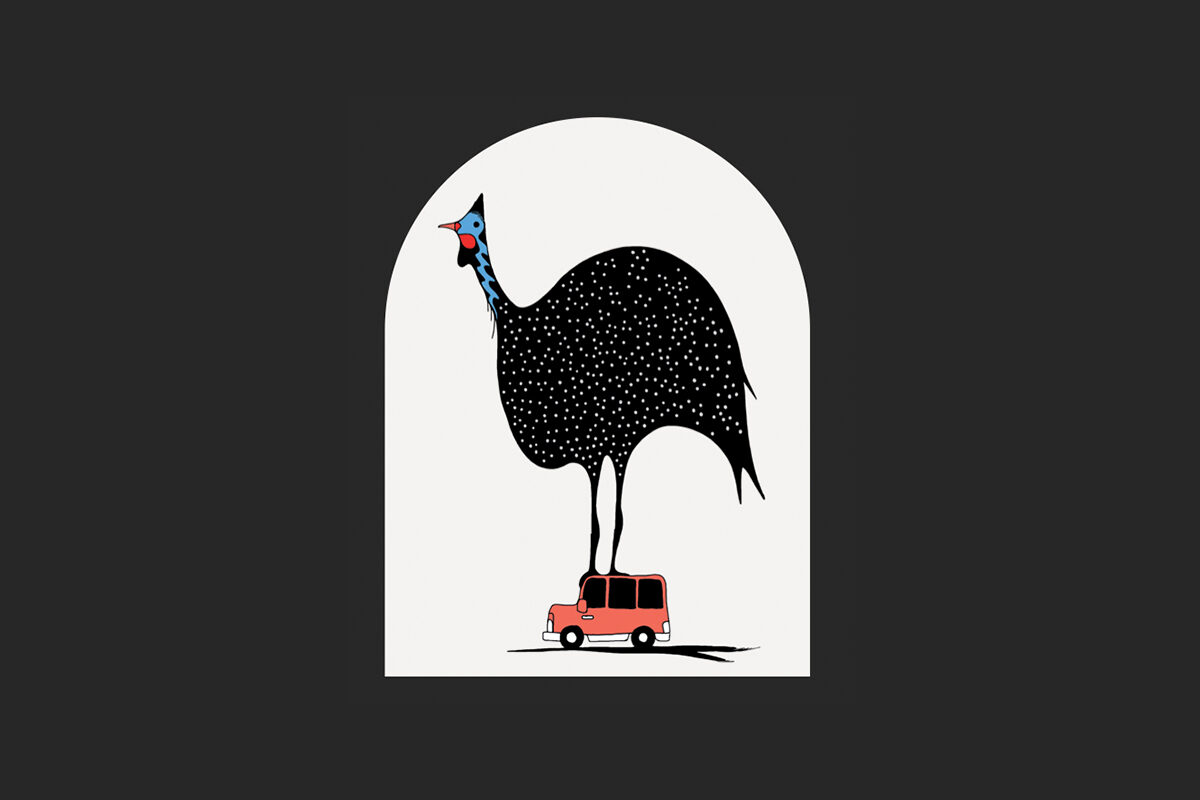For our issue on road trips, birder and Birds of North America host Jason Ward bids a (humorous) goodbye to his dearly departed fine-feathered friends—who also happen to be the most common victims of roadkill.
What’s devoid of life, can be seen on any stretch of highway, and leaves you both repulsed and fascinated if you decide to pull over and inspect it?
No, it’s not McDonald’s. The answer is roadkill. It’s estimated that millions of animals meet their ultimate fate each day from collisions with heedless vehicles—and unfortunately, birds constitute the majority of those numbers.
It’s truly ironic that creatures who have mastered the art of flight often wind up soaring straight into our bumpers and windshields. Today, we pay homage to the impetuous, feathered, and hollow-boned animals around the world who most commonly have the wind beneath their wings taken all too soon.
Found globally (except for Antarctica)
Barn owls have superpowers. They have great vision, incredible hearing, and wickedly strong talons. It’s said that owls can even hear a mouse’s heartbeat. If only car engines sounded more like that. You see, most normal owls sit patiently in a tree, waiting for their prey to reveal itself. But not barn owls. They prefer active hunting: by flying low, a few feet off the ground, and using stealth to attack small mammals, birds, and… cars. They’re also known as ghost owls—and unfortunately, now we see why.
Native to Europe and Asia, introduced in North America
One of the most well-known game birds, ring-necked pheasants have been playing “Frogger” with cars for decades. It’s a beautiful creature: The males have red faces, iridescent green necks, and brown bodies with long curly tails. This bird prefers to travel by foot, even though it can fly at about 56 miles per hour—fast enough to evade a car. They must have a thing for living life on the edge.
Native to Africa
A cool bird, with a cool name, these wild feathered animals spend their lives in family groups, eating seeds and small invertebrates. I hold a special place in my heart for the guineafowl because they eat ticks (and who doesn’t hate ticks?). This is a bird that would prefer to run, not fly, from a perceived threat—which is not the best strategy when a semi-truck is hurtling toward you. Maybe they thought the helmet would help.
Native to Europe and Asia, introduced globally (except Antarctica)
House sparrows live in close proximity to humans. They can be found in parking lots wherever free food is available to snack on. Though they never miss a chance to snatch a crumb off the floor, their trust in humans is also their downfall. Whenever I see one of these little guys flattened on the side of the road, I feel a sharp pang in my heart, because I too have risked life and limb to grab a piece of unwrapped candy off the ground.
Native to Australia
The second-tallest bird on Earth, emus can appear very menacing and dinosaur-esque, but they are inquisitive creatures apt to approach humans on occasion. How do we repay them for being so darn adorable? You guessed it—more car carnage. These giant muppets have a top running speed of 30 miles per hour, but even that isn’t enough to escape our metal machines of death.






